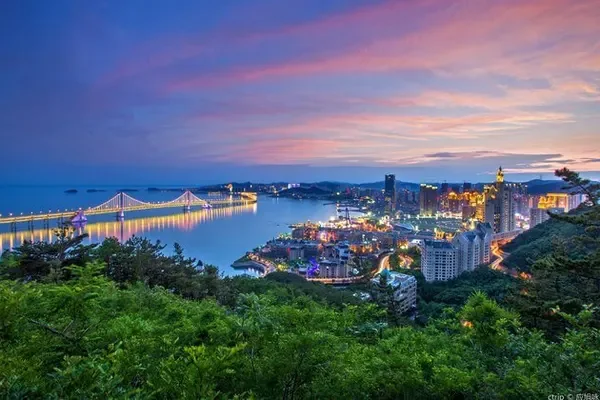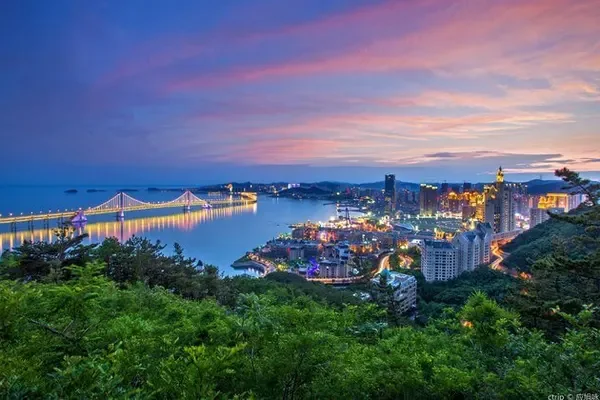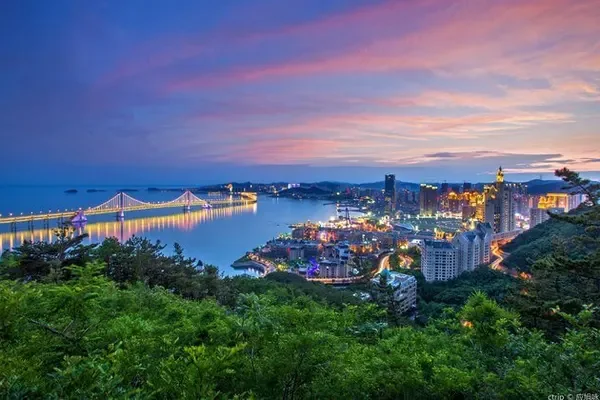Original: Xiaoyuan Self-driving (ID: xiaoyuanzijia2019)
Youyu County belongs to Shuozhou City, Shanxi Province. In ancient times, it was the Guifang area occupied by the Huns. During the Warring States Period, King Zhao Wuling defeated the Guifangloufan tribe and embraced Youyu. It was called Shanwu. He sent general Li Mu to guard the border and build the Great Wall . Youyu began to be active on the stage of history.

Youyu tour route
On the morning of the third day, the first stop of navigation was Shahukou, passing Cangtou River National Wetland Park on the way.

Cangtou River is also called Rabbit Hair River. "The mountain has no head, and the water flows backwards" means that the Cangtou River flows north to Inner Mongolia and flows into the tributary of the Yellow River, while the Tiger Mountain along the coast has no obvious peaks. According to Song Xu (WeChat public account Yanmen Wencong), the Cangtou River is the "Wall Head River", which refers to the river that flows from the corner of the Great Wall's side wall; Tribal names.

The weather was gloomy at that time, and the beautiful scenery of the Cangtou River could not be seen. We didn't visit carefully. Later, the road crossed the Cangtou River several times.

Killing the tiger is the most lively scenic spot in this itinerary. The parking lot filled up quickly. However, most of the tourists just visited the Shahukou Museum, boarded the brand-new Shahukou Tower and left.

The Shahukou Museum introduces the history of Youyu and Shahukou.
Shahukou was called Canhekou, Canghexing, Bailangguan, etc. in ancient times. It was called Shahukou in Ming Dynasty, and it was renamed Shahukou in Qing Dynasty. It is commonly known as "Xikou", and it is called "Zouxikou" when going north.
Killing Tiger Pass is an important pass of the Great Wall. For two thousand years, there have been continuous wars. From the Qin Dynasty's conquest of the Yin, the Han's conquest of the Huns, the Tang's war against the Turks, the Song's expelling the Khitan, and the Ming's Yu Yuanmeng and the Qingping's chaos in the West, scenes of wars and blazes, The Elegy of the Desert was once staged here.
After the refurbishment, the Shahukou Pass City has completely lost the vicissitudes of history. The remaining historical sites in the scenic area are the ancient Great Wall outside the east wall of Shahukou, and the Shahu Fort, Xikou Ancient Road, Tongshun Bridge and Guangyi Bridge in the south of the scenic area.

The existing Tongshun Bridge was rebuilt during the reign of Emperor Guangxu of the Qing Dynasty. Its name probably entrusts people's good wishes for smooth traffic.

Walk across the bridge and walk on the ancient Xikou Road, imagining the tragic and helpless feelings of the people who left their homes and went to Xikou back then.

There are three situations for people to go to the west through Shahukou: one is to reclaim wasteland, the other is to go to the desert to do business through Shanhukou, and the third is to starve people to go out to work because of the pressure of life.

I asked an old man for directions on the ancient road, and after chatting for a while, the old man said that his child was teaching in a certain university in Beijing, and he lived not far from our home, which made him feel very kind.

Nowadays, in pursuit of ideals and a better life, people make their homes all over the world. They no longer feel the sadness of going to Xikou back then, but the thoughts and concerns of relatives have been the same for thousands of years.
Killing Tiger Fort was built in the Jiajing period of the Ming Dynasty, and Pingji Fort was built in the south during the Wanli period of the Ming Dynasty. The two forts guard each other and are connected by a side wall in the middle, called Zhongguan, forming a chain of forts.


There are some abandoned houses in Zhongguan, and the villagers said they were destroyed by Japanese soldiers. There is still an old theater. There is a gap in the north leading to Shahu Fort. Killing Tiger Fort is now full of farmland.

Qing Dynasty stage

Zhongguan

Zhongguan

The opening of the city gate from Zhongguan to Shahubao
A new film and television city was built in Pingjibao. Looking at the plan, it will be a "new" scenic spot in the future.

It is about 1.5 kilometers from the Tongshun Bridge outside the Shahukou to the Guangyi Bridge outside the south gate of Pingji Fort, and I am a little tired after walking through the chain fort. It is suggested that you can drive to the south gate of Pingji Fort to visit it, which is more labor-saving.

Pingji Fort South Gate

Pingji Fort South Gate

Guangyi Bridge

We walked back to the vicinity of the parking lot, the antique buildings on both sides of Shahukou Road.
After lunch, head to Fanjiayao Xinghua Village. The road passes through the Yangang dense area of the Great Wall.



Ascending the heights and looking far away, the high loess slopes have vertical and horizontal lines, verdant vegetation, and the blue waves of the Cangtou River are like a picture of the beautiful scenery of the south of the Yangtze River.

However, before the 1940s, this place was completely different: the land was barren and the wind and sand were raging. "One wind a year, blowing from spring to winter." The ecological environment is so bad that it was suggested to relocate across the county.
Over the past 70 years, the forest coverage rate in Youyu has increased from less than 0.3% to the current 54%. The barren land in those days has become the "Oasis on the Fortress" of today. Youyu people have written a greening legend.

At present, Youyu's afforestation is still in progress. On the third day of our trip, we met many people who drove cars, off-road vehicles, minivans and even buses to plant trees in ditches and ridges.

The navigation signal on the way to Fanjiayao is not very good. Remember to go east and down at the last three-way intersection.

Walking into Fanjiayao Village, the whole village is very quiet without any sound. It was sunny, and I was suddenly a little nervous.

Turning around, there are dilapidated houses, and the whole village is empty. Only the sign at the entrance of the village says the lively scene here.
Fanjiayao Village is located under Hunyuan Peak. In the Ming and Qing Dynasties, there were magnificent Guanyin Temple and Longwang Temple. Every year around the Grain Rain, a grand temple fair is held when the apricot blossoms are in full bloom. Officials and people from far and near bring their families and daily necessities to enjoy the flowers. . Later, during the Anti-Japanese War, the temple was destroyed, and the grand scene of Fanjiayao was lost in history.

The ruins of the pavilion "Dequtai" in front of the temple
Various century-old trees such as elms, poplars, and peaches grow inside and outside the ancient village. The most attractive thing is the ancient apricot tree, but it is a pity that the apricot blossoms are almost gone. According to the Internet, the apricot flowering period here is between April 20 and May 10. It seems that the flowers bloomed earlier this year.


With regret, we left Fanjiayao and went to Youwei Ancient City.
The ancient city of Youwei used to be the seat of Shanwu County and Yanmen County during the Qin and Han Dynasties. During the Hongwu period of the Ming Dynasty, the Acropolis was built on the former site of Shanwu Ancient City, which took 17 years to complete. It is currently the seat of Youwei Town.
The streets and alleys of the ancient city are neat, the streets are full of traffic, and the pedestrians are bustling, full of life.
Youwei Art Granary was rebuilt from the original Chengguan Grain Station in Youyu County. The oil paintings exhibited inside are all the landscapes of Youyu's mountains and rivers. Here is the sketching base of dozens of colleges and universities.


Built in the Ming Dynasty, Baoning Temple is currently located on the campus of a school, and there are still Daxiong Hall and Tianwang Hall. The gate of the temple was locked when we went, so we only looked outside. There used to be a rare treasure "Shuilu Shenzhen on the edge of the town" silk painting, which was bestowed by the emperor after the "Civil Fortress Change". It was placed in Baoning Temple and is now stored in the Shanxi Provincial Museum.


Move to the west gate tower of the ancient city of Youwei, overlooking the entire ancient city. The ancient city is very large, and a new village was built near the west gate. The city walls are basically well preserved, and the city gates have been rebuilt in recent years. There are urns outside the four city gates.


There is a sign of "Thirty-two Great Wall" outside Ximen City. This is our last tour destination of the day.

The Thirty-two Great Wall is located on Hualin Mountain to the west of Youwei Ancient City, and the navigation is set as "Thirty-two Villages". Thirty-two Village means that the village is located next to the 32nd Beacon Tower of the Great Wall in Youyu, and this section of the Great Wall is named after the village.
The Yangchang path to the Great Wall is like a prairie road, with ups and downs and twists and turns. It is a single lane that can only pass one car, and there are places where cars can meet.

As the altitude rises, the vegetation gradually decreases. In the distance, the Great Wall protrudes on the high mountains.

Be careful not to drive to the "fake" beacon tower here, that is a fire station, and the road up will end, and you have to turn around on a small platform.

A small amount of cars can be parked on the roadside at the foot of the 32nd Great Wall. Here we encountered a small convoy of five or six vehicles, including cars.
Unexpectedly, Xinghua, who hadn't seen it in Fanjiayao, was actually seen here. There are also wild peach blossoms in the ravine.



Apricot blossoms dot the emerald green hills, the rammed earth Great Wall on the peaks is simple and vicissitudes, and the high loess slopes at the foot of the Great Wall are thousands of ravines. In my eyes, the Thirty-two Great Wall is the most beautiful Great Wall.





As the sun sets, the few tourists who were originally there have already left. On the open and remote Saibei Plateau, the zigzag Great Wall winds like a giant dragon.


The majestic ancient Great Wall has witnessed the prosperity of the past and the vicissitudes of the world. At this moment, what comes to my heart is not excitement and heroism, but a sense of heaviness.
Youyu is a place where you can really touch history and remember Huaiyuan.
Past travel notes:
"Fortress on the south of the Yangtze River" left cloud and right jade line (top) Yuehuachi, Dadanba, Motianling Great Wall
Want to go to a place with few people on May Day? May wish to take a trip to Datong Ancient Castle Canyon Tour (Part 1)--Zhenchuan Fort, Fangshan Yonggu Mausoleum
Want to go to a place with few people on May Day? May wish to take a tour of Datong Ancient Castle Canyon (Part 2)-- Desheng Fort, Hongmen Temple Ruins
Recommend a route suitable for Qingming May Day travel--Kaiyang Castle, Nihewan, Nuanquan Ancient Town, Feihuyu
Recommend a route suitable for Qingming and May Day trips--Kaiyang Castle, Nihewan, Nuanquan Ancient Town, Feihuyu (Part 2)


